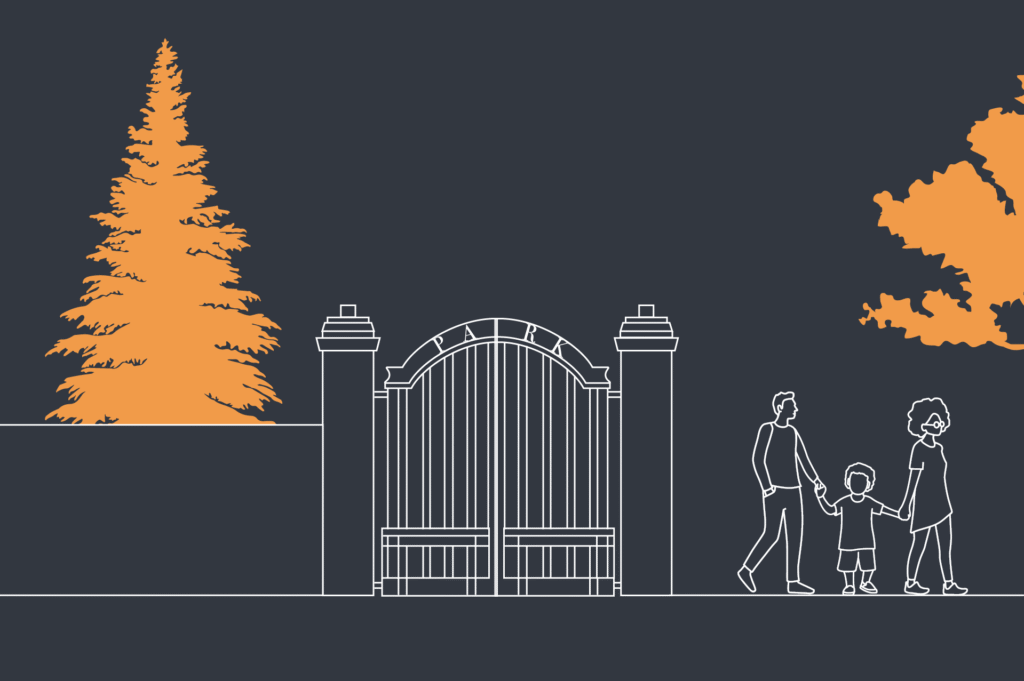You might have come across the term while eyeing up the gorgeous period properties on our books, but in most cases you needn’t let it distract you from that pretty Victorian cornicing.
Subsidence crops up when the ground beneath a property shifts due to a combo of dry weather, clay soil and wandering tree roots. It sounds dramatic, and sometimes is (so we’d always advise you seek professional advice) but more often than not, it’s perfectly manageable. Let’s face it, on a list of terrible things that 2020 has thrown at us, subsidence just doesn’t cut the mustard. Whether you’ve got a property where you’ve established a case of subsidence or you’ve got your eye on one, we’re here to tell you it doesn’t have to stand in the way of happy home ownership, so chill for a sec and consider the options.

From old fashioned tree management to the modern wonders of underpinning, there are plenty of tried and tested solutions out there. And the fact that there are solutions means the days of sweeping it under the carpet are over. Most subsidence-induced headaches stem from ignoring the issue for a long period of time, which is exactly what you’re not going to do.
Out and Proud: Top Tips for Sellers
The first step to managing subsidence is acknowledging you have it, embracing it even. So what should you be looking out for? Some tell-tale signs include cracks larger than a 10p coin both inside and outside of the property, ripped wallpaper or doors and windows which stick or no longer seem to fit the building. Being upfront with prospective buyers shouldn’t make you squirm so long as you’re taking the following steps to deal with it.
Find the Root Cause
As much as we wish we could meditate subsidence away, your best bet is swift, purposeful action. So once you’ve rolled up the yoga mat, you need to make two calls, one to your insurer and another to a professional chartered surveyor. They can give you the lowdown on the meaning behind those cracks and map out the route to fixing them. Don’t dilly dally in calling one in as monitoring the situation can take months or years (finding your inner zen could be helpful here).
Once the chartered surveyor has zoned in on the problem – the thirsty roots of a tree, an imbalance in the water table or a broken water pipe – fixing it can be swift. If the more arduous task (for the builders at least) of underpinning is proposed, whereby the foundations get some extra support, look to your insurance policy for financial help. Most offer protection against works required in relation to subsidence.

It’s pretty important you keep a record of everything you do to manage subsidence and hold on to the physical evidence. Ok, so it’s not exactly pub chat material but it does mean that you’ll be ready to answer any questions prospective buyers throw at you and back them up with evidence, that way nothing is standing in the way of your dream offer.
Hold Fire
Got the hots for a house but subsidence on your mind? When you’re smitten with a property, it can be tempting to jump straight in with an offer but hold fire until you’ve had a full structural survey of the property done – particularly if it’s an older building. While you wait for the results, practice your breathwork, shop around or plan which bedroom you’re shotgunning. Oh, and make sure to check in with the building’s insurance, although in most cases the insurance premium increase will be minimal.
In a perfect world, anyone selling a property will be up to scratch on its condition and will have kept a keen eye on any signs of subsidence and be taking the steps to repair it. If this is the case then you can get back to being a beacon of calm.
The main concerns arise when subsidence comes as a surprise to both parties – then you might want to proceed with caution. The good news is once you’ve costed up any necessary remedial work you’ll be well within your rights to chop some dosh off of your offer.

Prevention Is Better Than The Cure
Just like a bad hangover, prevention is the best cure (failing that, get a berocca down you). While you can’t prevent subsidence by abstaining from the pints, you can make sure external guttering, plumbing and pipes are properly maintained. Also, if you can help it, maybe don’t plant any overly large impulsive garden centre purchases so close to the house.
So, while we totally get how subsidence can put prospective buyers and sellers on edge, you now know it’s not a deal breaker when it comes to nabbing your dream pad. If you’d like further advice on this, (subsidence not meditation techniques) or anything else property related, don’t hesitate to contact us at info@daviesanddavies.co.uk.
Always seek independent and professional advice before making the moves on a property. To book a free, no obligation, property valuation please contact us using the details set out below, or by using our ‘Book a Valuation’ feature on our menu.
Get in touch:
alex@daviesdavies.co.uk – Lettings Director (contact for lettings and property management)
mark@daviesdavies.co.uk – Sales Director (contact for sales, new homes and chartered surveying)
020 7272 0986
Davies & Davies Estate Agents, 85 Stroud Green Road, London, N4 3EG
Article & images by Barefaced Studios

Welcome to the first instalment in our North London for Everyone series, where we shine a spotlight on the people who make our neighbourhoods tick. And help you find the best area to call home. We’re kicking things off with families, because if there’s one thing North London does brilliantly, it’s family life. From leafy parks to outstanding schools, community-focused cafés to excellent transport links. North London offers an enviable mix of urban vibrancy and residential calm-ideal for growing families. Here’s why North London is such a brilliant place to raise the next generation, with a closer look at the eight areas we know and love.
Read More...
Summer holidays are here! If you’re looking to keep the kids entertained without draining your wallet, North London offers a treasure trove of green spaces, hidden gems, and low-cost activities. From paddling in ponds to spotting canal boats. Here’s our guide to some of the best free (or very affordable) things to do with children in North London this summer.
Read More...
Selling your home? First of all, congratulations, and second of all, buckle up. Picking the right estate agent is a little like dating. You need to find someone who’s trustworthy, proactive, good at communication… and who definitely isn’t just there for your money. Before you swipe right on your agent, here’s what to ask and why. Read on for our guide to the key conversations you need to have – and the answers you deserve – before signing anything.
Read More...Get in Touch
Opening Times
Mon – Thurs: 0900 – 1815
Fri: 0900 – 1800
Sat: 1000 – 1600
Sun: Appointments by request